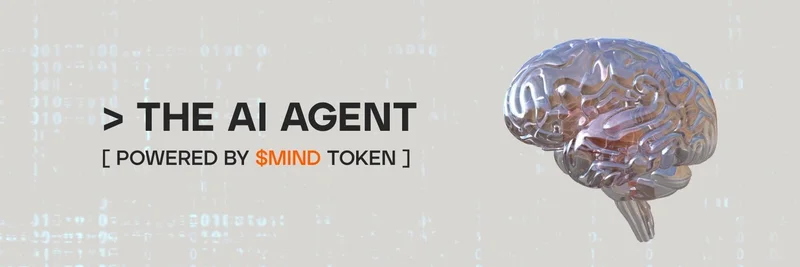Quick take
- The token with contract address 0x2a179bfab23c71c733864776bea6e0dab9ecd79e is deployed on BNB Smart Chain (BSC) and follows the BEP-20 standard, which is similar to ERC‑20 on Ethereum.
- The ticker “MIND” is used by multiple projects. Always rely on the contract address to avoid confusion.
- Public materials (whitepaper, official website) for this exact contract are limited at the time of writing, suggesting it may be early-stage, community-driven, or niche.
What “BEP-20 on BNB Chain” means
BEP-20 is BNB Chain’s standard for fungible tokens—comparable to ERC‑20 on Ethereum. It defines how tokens can be transferred, approved, and integrated with wallets, dApps, and DeFi protocols. BNB Chain is EVM-compatible, fast, and low-cost, making it popular for trading, gaming, NFTs, and meme tokens.
- BNB Chain website: https://www.bnbchain.org/
- Token explorer (BscScan): https://bscscan.com/token/0x2a179bfab23c71c733864776bea6e0dab9ecd79e
Why you might not find much info yet
Given the limited public presence tied to this exact address:
- It could be a new or still-forming project without a full website or whitepaper.
- Its utility might live inside a specific dApp or private community.
- It may be a meme or community token where narrative and engagement matter more than formal documentation.
- The ticker “MIND” is generic—other unrelated “MIND” or “Mind” projects exist on BNB Chain and beyond, but they use different contracts.
How to verify you’re looking at the right token
Use on-chain sources first. Start at the official contract page on BscScan:
- Check the token name, symbol, decimals, total supply, and whether the contract source is verified: https://bscscan.com/token/0x2a179bfab23c71c733864776bea6e0dab9ecd79e
- Review holders distribution (top wallets, deployer, any burn or liquidity addresses).
- Inspect recent transactions for activity patterns (e.g., centralized ownership, mint/burn events).
- Look for “Official Links” on BscScan—some projects list their site, X/Twitter, Telegram, or docs there.
- Confirm liquidity pools via “Holders” and “DEX Trades” tabs if available; note the pair addresses and the DEX.
Tip: Always paste the exact contract address (0x2a179b…d79e) when searching on explorers, DEXs, analytics sites, or wallets to avoid imposters.
Due diligence checklist (simple but effective)
- Contract verification: Is the code verified on BscScan?
- Ownership and privileges: Is the contract owner renounced? Are there functions like mint, pause, or blacklist? If yes, understand the risks.
- Liquidity: Is there locked liquidity? For how long? Which locker? If unlocked, the pool can be pulled.
- Taxes: Are buy/sell taxes present? High taxes can trap traders.
- Honeypot checks: Test small trades or use risk tools to ensure selling is possible.
- Socials and messaging: Are official channels transparent and consistent? Beware of cloned social accounts.
- Community and volume: Healthy trading volume and organic community sentiment reduce manipulation risk.
- Roadmap and utility: Even meme tokens benefit from clear plans and use cases.
Exploring and trading MIND safely
Because the “MIND” ticker is widely reused, always trade using the contract address:
- BscScan token page: https://bscscan.com/token/0x2a179bfab23c71c733864776bea6e0dab9ecd79e
- GMGN.AI token page (analytics/trading tools): https://gmgn.ai/eth/token/fV1R5sZ5_0x2a179bfab23c71c733864776bea6e0dab9ecd79e
- PancakeSwap (search by contract address): https://pancakeswap.finance/
Practical steps:
- Copy the contract address from BscScan.
- Paste it into your chosen platform’s search (e.g., PancakeSwap or GMGN.AI) to pull the exact token/pair.
- Start with a small test trade to check slippage, taxes, and sellability.
- Monitor pools and price impact. Sudden changes in liquidity can affect execution.
- Use risk tools to scan for honeypot-like behavior and abnormal fees before committing size.
Note: Listings and pairs can change. If a platform doesn’t show the token, verify you’re on the correct chain and that the token actually has an active pool.
Understanding the BNB Chain context
BNB Chain’s low fees and EVM support encourage high-frequency trading and rapid meme cycles. This environment is great for experimentation but also heightens risk:
- Fast-moving narratives mean tokens can pump and fade quickly.
- Rug pulls, stealth taxes, and liquidity games remain common.
- The best defense is strict on-chain verification and controlled position sizing.
What we know vs. what to watch
Known:
- Contract address: 0x2a179bfab23c71c733864776bea6e0dab9ecd79e
- Chain: BNB Smart Chain (BEP‑20 standard)
- Public materials tied directly to this address are limited so far.
Watch:
- Any verified official links added on the BscScan page.
- Liquidity events (additions/removals) and holder changes.
- Contract updates (if upgradeable) and source verification status.
- Emergence of reputable exchanges, analytics, or community channels referencing this exact contract.
Final thoughts
When information is sparse, the safest path is on-chain first, hype second. Treat “MIND” as contract-specific—not brand-specific—and let the data guide your decisions. If you choose to trade, use platforms that let you verify by address, start small, and keep a close eye on liquidity and permissions.
Resources:
- BscScan (official explorer): https://bscscan.com/token/0x2a179bfab23c71c733864776bea6e0dab9ecd79e
- BNB Chain overview: https://www.bnbchain.org/
- GMGN.AI page for MIND: https://gmgn.ai/eth/token/fV1R5sZ5_0x2a179bfab23c71c733864776bea6e0dab9ecd79e
- PancakeSwap: https://pancakeswap.finance/



